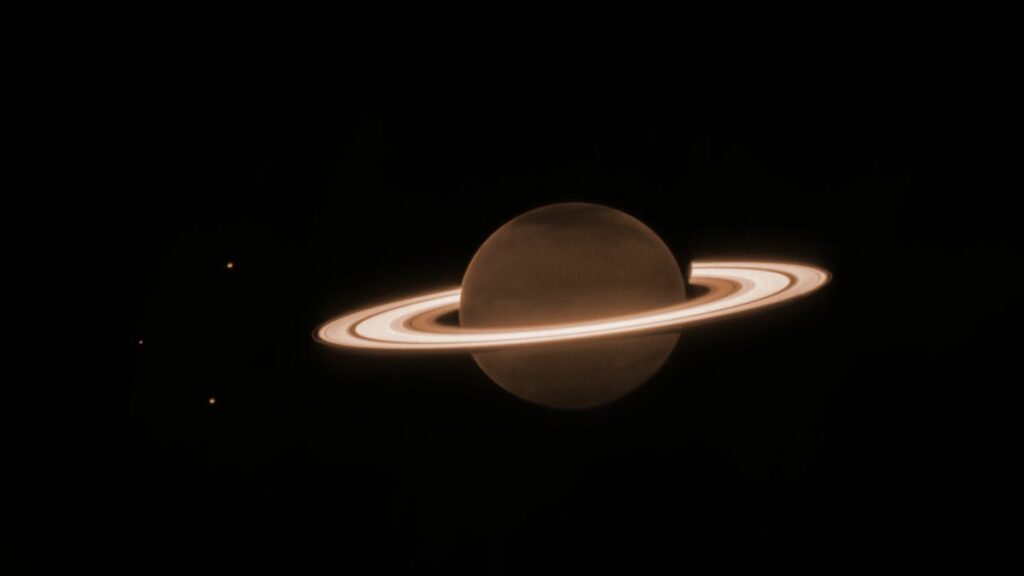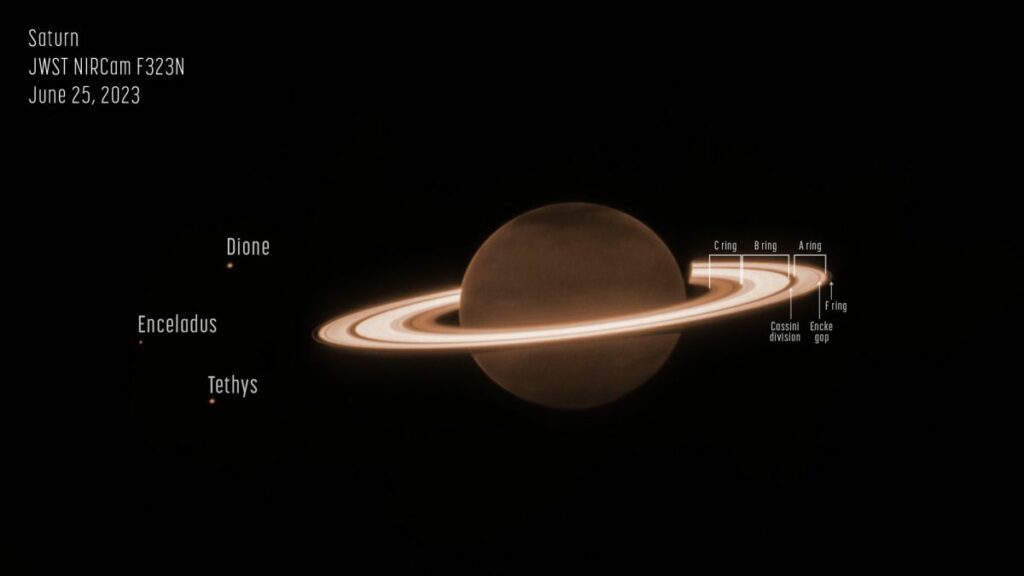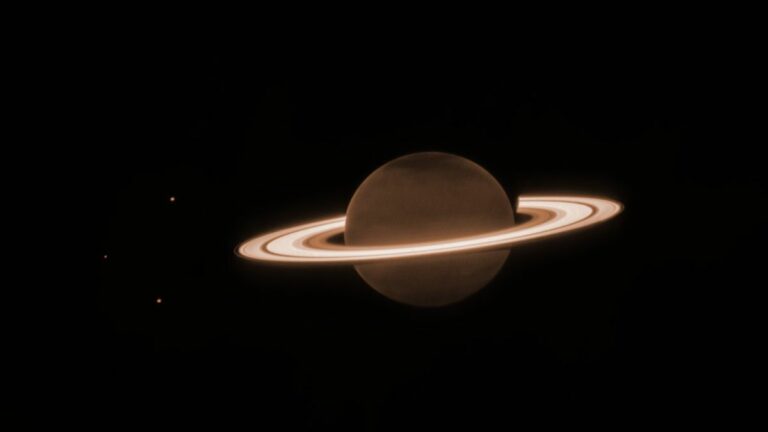First Photo of Saturn’s Gas Giant Captures the Breathtaking Beauty of its Enchanting Rings
A few of Saturn’s many moons are visible as well.
The Inaugural View of Saturn through the James Webb Space Telescope Leaves a Lasting Impression.

NASA unveiled a breathtaking image taken by the James Webb Space Telescope (JWST) that showcases Saturn in an entirely new light. The photograph, captured on June 25 by the telescope’s NIRCam (Near-Infrared Camera) instrument, has already captivated researchers with its mesmerizing details, according to NASA officials.
In the image description, NASA explains that Saturn appears remarkably dark in this infrared wavelength due to methane gas absorbing most of the sunlight that reaches its atmosphere. However, the icy rings of the planet remain luminous, resulting in an extraordinary visual representation of Saturn in the Webb image.
This remarkable photograph is the result of a 20-hour-long observation campaign dedicated to Saturn by the JWST. Earlier glimpses of the campaign’s findings were shared through raw JWST photos on the unofficial website JWST feed. The newly released image highlights the profound impact of processing on the final presentation, showcasing the remarkable transformation it can bring to celestial imagery.”

While Saturn’s captivating rings take center stage in the latest photograph, the image also showcases three of Saturn’s 145 known moons: Enceladus, Dione, and Tethys.
Of particular interest to astrobiologists, Enceladus is believed to harbor a subsurface ocean of liquid water beneath its icy crust. NASA’s Cassini probe, in 2005, discovered dramatic geysers near the moon’s south pole, which eject some of this subsurface water into space. The James Webb Space Telescope (JWST) has recently observed these fascinating features, adding to our understanding of Enceladus.
While JWST was primarily designed to explore the depths of time, providing astronomers with glimpses of the universe’s earliest stars and galaxies, the new photograph of Saturn highlights the observatory’s capability to examine objects closer to home.
In addition to its remarkable view of Saturn, the $10 billion telescope has captured stunning images of Uranus and offered remarkable observations of Jupiter, including its polar auroras. With the launch in December 2021 and the commencement of science operations last summer, JWST is only beginning its scientific journey, promising more breathtaking discoveries in the years to come.
Do not forget to share your opinion with us to provide you with the best posts !




0 Comments